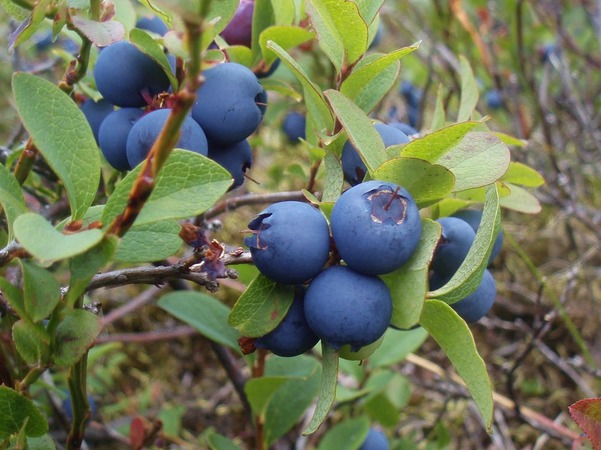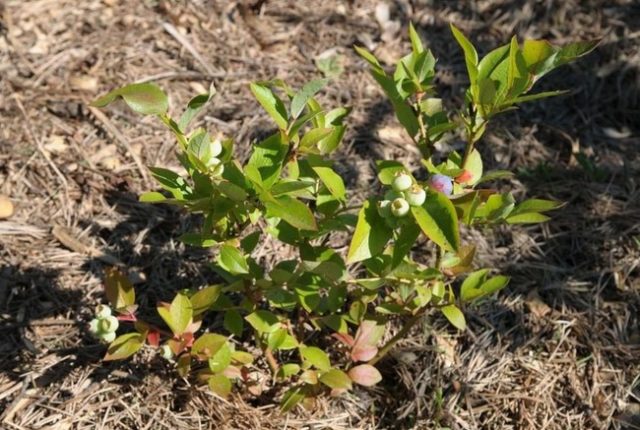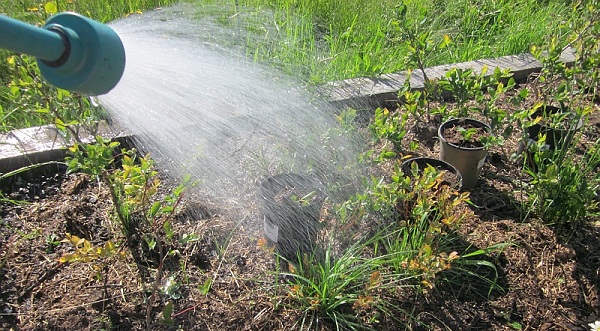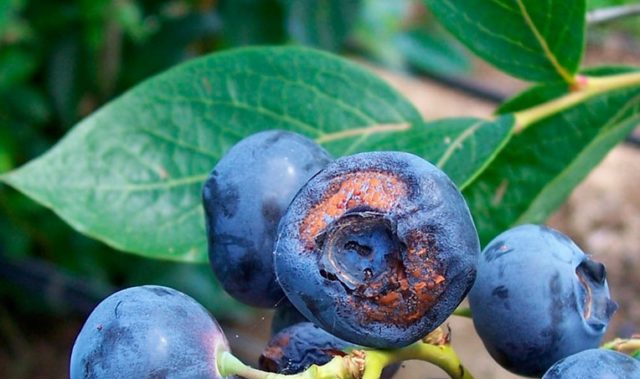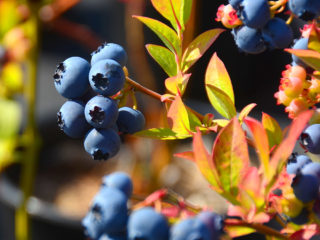Content
Planting and caring for blueberries in the Urals has its own characteristics. Cultivation success will depend on the correct variety and planting. It is important to carry out agrotechnical procedures - watering, feeding, weeding, pruning. Caring gardeners will delight the berry with a good harvest.
How blueberries grow in the Urals
There are currently over 700 varieties of blueberries. Most of them tolerate low temperatures well -36… -38 ° C. There are thermophilic varieties that cannot withstand temperatures below -24 ° C. They were obtained in America, Florida. Such varieties are grown in the Urals, covering each bush with spruce branches and falling asleep with snow when it falls. Some gardeners plant thermophilic blueberries in tubs, and, with the onset of frost, hide them in herds.
The best blueberry varieties for the Urals
Despite the wide variety of modern blueberry varieties, frost-resistant varieties are suitable for cultivation in the Urals.
What varieties of blueberries are better to grow in the Urals
When choosing a blueberry variety for the Urals, one must take into account not only the quality of the fruit, yield and disease resistance, but also the frost resistance zone. The State Register includes six varieties of the Blueberry high, recommended for cultivation in all regions of Russia:
- "Bluecrop" - a variety of medium ripening, medium-sized.
Dark blue berries of dessert taste, weighing up to 1.9 g. Easily tolerates frosts down to -25 ° C. In cold winters, it needs insulation.
- "Huron" - berries for universal use are not very sweet, weighing up to 2.6 g.
Shoots are light green, not pubescent, tall bush. Withstands frosts down to -25 ° C.
- "Duke" - a medium-sized semi-spreading bush with straight, greenish-red shoots without pubescence.
The harvest is ripening early. The berries are flattened, blue, weighing up to 2.9 g. The taste of blueberries is sweet, the aroma is pleasant. Damaged at temperatures below -30 ° C.
Varieties Liberty, Aurora, Draper in the Urals, they can only be grown in greenhouses or containers, as they do not tolerate frosts below -20 ° C.
For the Urals, varieties of the type Blueberry are suitable, they tolerate frosts down to -42 ° C, are resistant to diseases. The State Register includes:
- "Blue Scattering";
- "Graceful";
- Iksinskaya;
- "Nectar";
- "Wonderful";
- "Taiga Beauty";
- Shegarskaya
- "Yurkovskaya".
The berries of the listed varieties are about two times smaller than those of High Blueberry, they are not as sweet, but healthy and aromatic.
Planting blueberries in the Urals
For planting and growing blueberries in the Urals, seedlings with closed roots are purchased. 2-3 different varieties are planted on the site for cross-pollination.
Recommended timing
Seedlings with a closed root system can be planted in the Urals during the growing season. Best of all, they transfer a transplant to a permanent place in August, when there is no extreme heat, and in spring, in May.
Site selection and soil preparation
Blueberries love sunny, well-lit places, sheltered from the cold wind. The acidity of the soil for cultivation should be pH 4.5-5.In sandy loam soil, the plant feels better than in clay, heavy soil. When planting, sour peat, rotted sawdust and coniferous litter are added directly to the hole.
Blueberry roots live in symbiosis with mycorrhiza, a special fungus that helps the plant absorb water and nutrients. Only an acidic soil environment is suitable for mycorrhiza. Therefore, a bush planted in ordinary garden soil with neutral acidity stops growing and soon dies.
How to plant blueberries in the Urals
In the gardens nearby, crops grow with different requirements for soil and maintenance. Blueberries are different from most horticultural crops. Description of planting blueberry seedlings in the Urals in spring:
- The seedling is soaked in water for 3-4 hours, freed from the container.
- A pit is prepared with a diameter of 40 cm and 50 cm in depth.
- Black sour peat is poured at the bottom, and mixed with rotted sawdust. The pit is filled to 1/3 of the height.
- The soil of the plot is fenced off from the contents of the hole in which the blueberries will grow. This can be done using planks, logs, polypropylene bags without a bottom, or dense plastic, which is sold in garden centers.
- The fence is installed along the outer diameter of the pit to form a partition that separates the two layers of soil - outer and inner.
- The root of the seedling is slightly kneaded, without destroying the earthen lump, entangled with small roots.
- The hole is watered, the seedling is set in the center.
- The empty space is filled to the top with sour red peat, and lightly tamped, then watered.
- The trunk circle is mulched with coniferous litter with a layer of 4 cm, then covered with straw to protect it from drying out. Water the seedling from above over straw and leaves again.
When planting, manure and ash must not be introduced.
Growing blueberries in the Urals
There are several ways to plant garden blueberries in the Urals. They are divided into industrial and private, for small garden plots. In a large field, there is no need to fence each bush separately, because they all grow like a monoculture and help each other.
The plant is propagated by layering. To do this, the side branch is bent to the ground and buried in soil, leaving the top on the surface. After one and a half to two years, a new bush will grow from the cut, which can be separated with a pruner and planted in a new place.
Watering and feeding schedule
After planting blueberries in the Urals, according to gardeners, care comes down to regular watering. It is especially important during the budding phase. The formation of buds for future fruiting occurs in July-August. If the plant lacks food and water during this period, there will be no harvest.
For the normal growth of blueberries in the Urals, it is necessary to acidify the soil in which it grows in spring and autumn. For this, colloidal sulfur is used. It is scattered in the amount of 2 tbsp. l. under each bush, and cover with a layer of mulch.
In order for blueberries to enjoy the harvest and grow well, in addition to maintaining the required level of soil acidity, additional feeding is important. There are specialized mineral fertilizers with a high sulfur content, for example, Florovit. The plant is fed in early May.
Loosening and mulching of the soil
The best mulch that additionally increases the acidity of the soil is pine litter. But you can use coconut fiber and hay for this.
Mycorrhiza multiplies more intensively under a layer of mulch. Blueberry nutrition improves, and it changes before our eyes - the shoots become powerful, the leaves are shiny and juicy with a bright green color. The yield and the size of the berries increase.Such a plant will be able to successfully withstand frost, drought, high humidity and other unpleasant weather conditions.
Weeds are weeds around the blueberries, they take away 30% of its moisture and nutrition if they grow near the trunk circle. Siderates are planted in the aisles:
- vetch-oat mixture;
- buckwheat;
- phacelia.
Then, before flowering, the green manure is pulled out and covered with a layer of straw on top. If buckwheat is planted between the rows, it will suppress the growth of weeds by root secretions, destroying the competitors of blueberries for food.
Pruning
In the Urals, blueberry pruning is carried out every year closer to spring, in February-March, before bud break. Old bushes rejuvenate by cutting out old branches that are more than 2-3 cm in diameter at the base. On blueberries, they try not to leave branches older than four years. On old shoots, the bark is dark, the fruits ripen small. In addition, all diseased and thickening branches are cut out. After pruning, many annual shoots will go from the base of the bush.
Before you start pruning, the blueberry bush is carefully examined, and then the shoots are cut out:
- weak and thin;
- broken;
- growing inside the bush;
- old, with brown, scaly bark.
How to prepare blueberries for winter in the Urals
If improperly planted in neutral soil, blueberries freeze in winter even in the Southern Urals. A healthy plant is frost-resistant and remains intact at -32 ° C. Only late spring frosts are terrible for the berry.
Pests and diseases
May beetle larvae can severely damage blueberry bushes in the Urals. If the bushes begin to dry out for no apparent reason, it is necessary to check for the presence of the pest in the soil. By raking the ground under the dried blueberries, you can find large white larvae of the beetle, similar to thick caterpillars.
On household plots, blueberries damaged by chrushchee are treated with the preparations "Antichrushch" or "Aktara". During the season, four sprays of blueberries are carried out with a drug from the larva of the beetle. To prevent the spread of the pest, before planting blueberries, a biological preparation "Metarizin" is introduced into the soil.
The bear is also a danger to blueberries. She gnaws at the roots. You can bring the bear to the site along with peat. They destroy insects by placing baits - bottles with beer or sweet syrup are buried in the ground up to the neck. Medvedka climbs inside, but can no longer get out.
Hares are also pests. In winter, blueberry twigs are a treat for them. To protect the site, you will have to get a large dog and repair the fence so that the hares cannot enter the garden.
Blueberries have strong immunity, they are rarely affected by diseases. If the basic agrotechnical requirements are observed during planting and cultivation, the culture safely tolerates frost and bad weather.
Yellowing of blueberry leaves indicates chlorosis. This means that the plant does not absorb iron, it lacks nitrogen. For successful treatment of chlorosis, it is necessary to acidify the soil with electrolyte or sulfur.
Reddening of the leaves - a lack of phosphorus and other trace elements. To eliminate the problem around the bush, it is necessary to pour 2-3 shovels of vermicompost, acidify the soil with electrolyte, and close the trunk circle on top with straw. Recovery will come in 2-3 weeks, the leaves will turn bright green.
Weakened blueberries in the Urals can be affected by some fungal, bacterial and viral diseases. The most common are:
- gray rot - manifests itself in reddening of leaves, stems, flowers and fruits, then a gray bloom appears;
- physalosporosis - in the fall, swollen reddish spots appear on young shoots, which then turn into wounds;
- double spotting - in spring, small brown spots appear on the leaves, increasing over time;
- stem cancer - leads to the death of shoots;
- moniliosis of fetuses - the bushes seem to be damaged by frost;
- white spot - white, gray or yellowish spots 5 mm in diameter appear on the leaves.
For the treatment of fungal diseases, universal drugs are used - Bordeaux liquid, Topsin and Euparen.
In addition, you can learn how to properly plant and care for blueberries in the Urals from the video.
Conclusion
Planting and caring for blueberries in the Urals will bring pleasure to attentive gardeners. Blueberries are not only a healthy gourmet berry. It is a beautiful plant with shiny leaves and bell-shaped white flowers. It will perfectly fit into any landscape composition.
